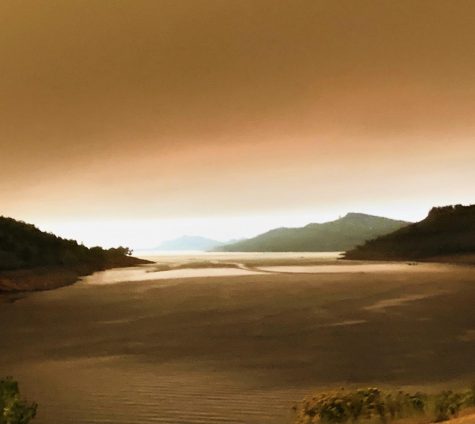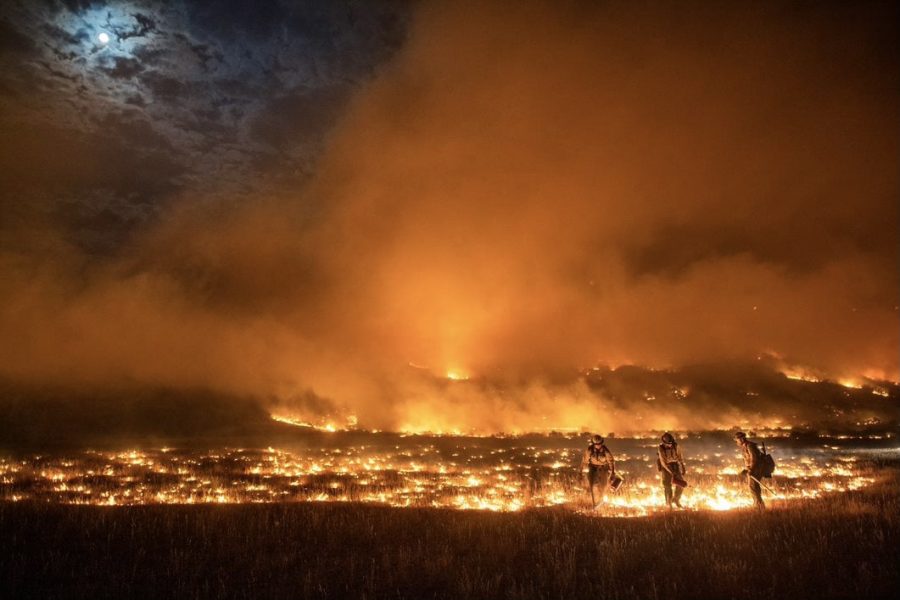Snow Shower is Deemed A ‘Succor’ For Colorado Wild Fires
Pine Gulch Fire in western Colorado
October 6, 2020
Early Tuesday morning of Sept. 9, 2020, the state of Colorado woke up with tranquil snow showers and snow flurries. The day before this, there were over 300,000 acres of forest and land scorched by means of the parching temperatures Colorado had reached over the last few days.
The Pine Gulch fire, near the city of Grand Junction, was unfortunately Colorado’s biggest fire yet, breaking the record of the 2002 Hayman Fire near Colorado Springs, with 138,114 acres. Meanwhile, the Pine Gulch fire surpassed it with 139,007 acres of land being burnt. There were a lot of hot and very dry weather conditions that persisted constantly throughout the days, along with winds flurrying up to more than 20 mph.
It is also worth mentioning that the Mullen Fire, which started in Medicine Bow Mountains which is west of Laramie in Wyoming on Sept. 17, is up to this day 151,711 acres burnt and has crossed into the border between Wyoming and Colorado into Jackson County.
A roaring fire that occurred in Colorado was the Lewstone Fire near Fort Collins. On Wednesday, Aug. 26, around 9:00 am to 10:00 am, the Lewstone Fire quickly transitioned to a type 4 incident according to the Larimer County Sheriff’s Office. Fire crews were scheduled on Wednesday to do clear up work on the fire. Though we weren’t in luck with any snow or rain that day, firefighters managed to contain the fire for a while. The fire was declared 100% contained with no more probability of the fire spreading and all the evacuations were finally lifted, but less than a day later, the Larimer County Sheriff’s Office were looking out for more fires that had spread near the same area as the Lewstone fire.
According to fire officials, there was between eight to fourteen inches of heavy snow that fell on the Cameron Peak Fire on Tuesday and the night of Wednesday. The fire ended up surging over the last two weeks which caused more smoke and ash even in Denver. It was another fire that transpired in Larimer county near Fort Collins. Wildfire smoke that gusted throughout the Front Range from the developing Cameron Peak Fire rapidly turned the skies orange during Labor Day. It soon developed a much eerie scene just a couple hours before the snowstorm was supposed to come and snow all over Colorado. The fire grew over the Labor Day weekend, which worked up by temperatures over 90 degrees fahrenheit. The blaze was just over 102,596 acres and 4% contained. The Cameron Peak Fire burned an excessively forested area known as the Red Feather Lakes. Thankfully, the fire has not grown ever since the snow showers started on Tuesday and won’t likely grow anymore.

A couple of miles away from the Cameron Peak Fire, the smoke turned almost the whole sky surrounding Horsetooth Reservoir orange. The smog from this blazing fire had cast an ominous spell over Northern Colorado.
On Aug. 12, an organization called The Upper Colorado River Fire Type 3 decided to take control over the Grizzly Creek Fire near Glenwood Springs on Wednesday morning. On Tuesday, a week later, containment reached a total of 91% all thanks to the snow showers that fell upon the fire and the cooler temperatures that arose. The Grizzly Creek Fire ended up scorching over 32,464 acres of land and forest. The fire has not grown in about 3 to 4 weeks and firefighters have been trying to monitor that area because they are concerned for the safety of everyone and everything surrounding that area. This fire was also considered a type 4 fire incident, which is usually small fires that don’t require a written Incident Action Plan. The cause of the fire is still unclear and unknown. It is most certain though, that the fire was most likely started because of the hot and parching temperatures.
An additional wildfire was the Williams Fork Fire in Fraser, CO. Supposedly, fire investigators have determined that the cause of this fire was by human activity, but the specific facts are still unknown. The Williams Fork Fire was a small fire that started near a mill on Aug. 14 and quickly grew due to the very high winds. Firefighters have contained this fire. Unfortunately, there were no snow showers to help prevent the growth of the fire. Although, throughout the past weeks, there have been cool temperatures in Fraser that have resulted in reducing the chance of another fire spreading. The Williams Fork Fire burnt 12,320 acres and only 25% of the perimeter was contained.
Hopefully, the summer snow and showers helped firefighters and rescue teams keep all of the fires down around Colorado. There were over 30 wildfires active in mountainous areas and there is still concern that many of the fires like Pine Gulch Fire will flare up again. There are numerous areas that are still burning and a lot of land that needs to be cleared up by firefighters and rescue teams. The only thing Coloradans have left to do is hope and pray that we will have another snowy day or rainy day to prevent more wildfires from growing similar to the ones that we have already been affected by.

